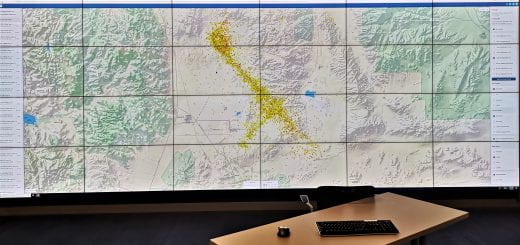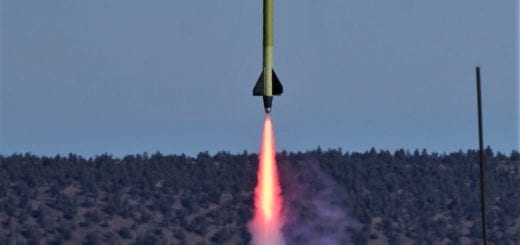The Totality of NASA Eclipse Soundscapes

My total eclipse photograph from just outside of Carta Valley, Texas
Two thousand twenty-four hosted the second total eclipse crossing all the way across the USA in just seven years. From the perspective of scientists, eclipses present time for experimentation. This year was not going to be different. Physicists and amateur radio enthusiasts had geared up to conduction radio wave propagation studies, and the biologists, well, they were setting up for ethology studies. Ethology in the ecological world is the study of animal behavior. And NASA had its hands all over this one. Recent electronics development from Open Acoustic Devices had led to the creation and distribution of small programmable recorders that could be placed outdoors and set to record at specific times of the day. Want to know what birds are calling at 6 am versus 6 pm, use an AudioMoth. Want to record the ultrasonic call of bats from 10 pm to midnight? Use an Audio Moth. Want to know how animals change the calling behavior during an eclipse. Yes, use an AudioMoth and NASA will give you one free to do the job. OK, so that last part is already over. Had you wanted to help record animals during the eclipse, NASA/Eclipse Soundscapes would have sent you an AudioMoth for free.
This Last April NASA helped sponsor the Eclipse Soundscapes Citizen Science project to validate whether or not animals changed their behavior during an eclipse. This was right up my alley of things I like to do. I already had an airplane voucher to use before the end of summer and a flight down to Texas to see the eclipse seemed good way to use it. So, I joined the Eclipse Soundscapes Project, went through their simple training and purchased an AudioMoth for the Adventure. Had I signed up earlier, NASA would have supplied one for free, but I was late to the game, but was making sure I could play. For my own kicks and giggles, I also employed a couple of short-term temperature sensors to record the temperature during the eclipse. Each record a point every 5 minutes. However, with the eclipse also just lasting 5 minutes, I used to record data every 2.5 minutes ensuring I would get a point during totality. I set up a video camera to catch the sky and then used my better camera to get photos of totality.

In combination with the AudioMoth and important for the Eclipse Soundscapes Project was the Merlin application by Cornell University. Being a visitor to Texas from Oregon I was not familiar with what all would be calling before, during and after the eclipse. The Merlin App gave me the immediate tool to identify calling bird species.
Here is my site for the project. I am the farthest west site for totality in the U.S.
Here is my report for that day for the NASA project:
Dean Walton – deptpublicworks@gmail.com NASA SoundScape Project 2024/04/08 Site: Carta Valley, Texas vicinity Coordinates:
Lat: 29.761549
Long: -100.720715
Site Description: This site is just a few kilometers west of the town of Carta Valley, Texas. It is a roadside observation site 5 meters off the east side of Texas Highway 377 at a gentle ridge crest. Ecologically, the area would be described as an open scrub forest. There is a wind-turbine farm just .5 kilometers SW of the site.
The site observation time reported here, covers 30 minutes prior to and 30 after the eclipse, but I have data that covers a full hour prior and post eclipse, from the use of a personal AudioMoth. A landscape view of the area, 10 minutes prior to, during and after totality was recorded as a single video with a GoPro Camera. Additional short video recordings for the two hours prior to totality were recorded on a personal Samsung cell phone. Temperature data were collected via two Freshliance temperature data-loggers.
The time stamp on the data-logger is off by 1 hour as a result of crossing a time-zone. The Merlin app was used to ID bird calls, and iNaturalist was used to ID flying insects.
Data collection for this report started at UTC 18:00 and ended at UTC 19:00.
The center of totality based on the Lat/Long of the site was considered to be 18:29.50 to 18:32.
Weather at UTC 18:00 was blustery with winds estimated to 16-25 Kph with gusts up to 40 Kph, enough to push on your body. Skies were cloudy with about 85% cloud cover. Temperature at 18:00 was 28.11 C.
At the center of totality, constant winds had died down, but there were still gusts of an equal prior magnitude as the start of data collection. At UTC 18:31 the temperature had dropped to 25.1 but then continued to drop for another 13 minutes post totality to a temperature of 24.2 C.
At the end of the observation time at 19:00, clouds had returned to a higher coverage of 90%. Winds conditions were consistent with the start of the observations and the temperature had now risen to 25.0 C
INSECTS
A bee or fly was heard buzzing during the recording time of the eclipse, but after totality.
After totality and during the data collection time two butterflies and one bee were observed pollinating opuntia cactus flowers
Butterfly: Kricogonia lyside
Butterfly: Abaies nicippe
Bee: Diadasia sp.
BIRDS
Based on the MERLIN app, birds calling in the area prior to the start of data collection include:
Bewick’s Wren
Blue-gray gnatcatchers
Canyon wren
House finch
Ladder-backed woodpecker
Lark Sparrows
Mourning doves
Northern cardinal
Song sparrow
Spotted towhee
However, during data collection, only the Bewick’s wren and the mourning doves were identified as calling. A Bewick’s wren was heard calling during the recording period and prior to totality. It stopped near the period of totality and resumed calling afterwards, along with a second Bewick’s wren. Mourning doves were heard during the period of totality and calling after totality.
AMPHIBIANS
None noted
REPTILES
A single lizard resembling a Sceloporus species was noted scurrying under scrub. It was tan in color and was approximately 15-20 cm in length.
MAMMALS
A silver fox was observed out and about during the recording time and prior to totality. It was about 120 meters away and when it observed us, it dashed back into the brush. It came out a few minutes later about 200 meters away and ran across the highway into the brush on the other side of the road.
PEOPLE
The observation site had 4 people: Three adults including myself and one infant. The three adults wandered about and chatted during the initial period of the eclipse.
All adults stopped walking about and stared at the sky during the period of totality. We all started whispering during totality. I took a series of pictures prior, during and post totality. However, a burst of pictures was taken during totality and that can be heard in the audio recordings
VEHICLES
Many cars passed the spot with an estimated ratio of 4:1 traveling NE on Highway 377 prior to totality. Three cars were recorded during the pre-totality phase of the observation. None during totality, and 7 cars, 1 ATV and one small aircraft were recorded during the 30 minutes post-totality of the observation period, all cars were traveling south.
End of Report Dean Walton
The viewpoint above Carta Valley, Texas



